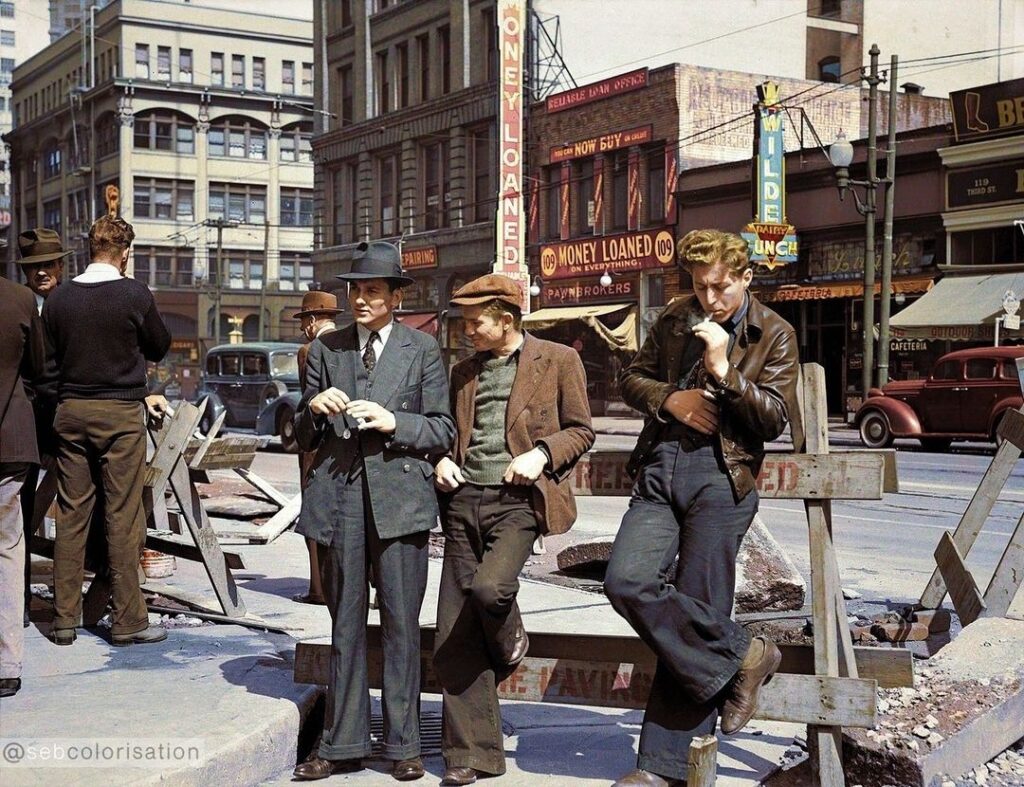1930s Chevy Trucks For Sale: A Comprehensive Guide to Owning a Piece of Automotive History sale.truckstrend.com
In the annals of American automotive history, few vehicles evoke the same sense of rugged resilience, timeless design, and enduring charm as the Chevrolet trucks of the 1930s. These workhorses, born in the crucible of the Great Depression, not only played a vital role in keeping America moving during challenging times but also laid the foundation for Chevy’s legendary truck legacy. Today, for enthusiasts and collectors, the allure of a 1930s Chevy truck for sale extends far beyond mere transportation; it represents an opportunity to own a tangible piece of the past, a vehicle that tells a story of perseverance, innovation, and classic American craftsmanship.
Whether you’re a seasoned collector, a budding restorer, or simply captivated by the aesthetic of pre-war automotive design, understanding the landscape of 1930s Chevy trucks for sale is crucial. This comprehensive guide will delve into what makes these trucks so special, where to find them, what to look for, and the practicalities of bringing one home.
1930s Chevy Trucks For Sale: A Comprehensive Guide to Owning a Piece of Automotive History
The Enduring Appeal of 1930s Chevy Trucks
The 1930s were a transformative decade for automotive design and engineering, even amidst economic hardship. Chevrolet trucks from this era stand out for several reasons:
- Historical Significance: These trucks were the backbone of farms, small businesses, and infrastructure projects during the Great Depression. They were symbols of functionality and necessity, embodying the spirit of American industry and resilience. Owning one connects you directly to this pivotal period.
- Distinctive Art Deco Styling: As the decade progressed, Chevy trucks embraced the burgeoning Art Deco movement. From the sleek, sculpted grilles of the late 30s to the more rounded, robust lines of the early years, each model year brought subtle yet significant design evolutions. Their aesthetic appeal is undeniable, making them popular choices for show trucks and classic car enthusiasts.
- Mechanical Simplicity and Robustness: Built for utility and durability, these trucks featured straightforward mechanicals. The ubiquitous "Stovebolt Six" inline-six engine, first introduced in 1929, was known for its reliability and ease of maintenance, a testament to its longevity. While lacking modern conveniences, their basic design makes them appealing for those who enjoy hands-on mechanics.
- Versatility in Customization: While some purists seek original, unmolested examples, many 1930s Chevy trucks are popular platforms for "restomods" – vehicles restored to their original appearance but updated with modern drivetrains, suspensions, and amenities for improved drivability and safety. This versatility broadens their appeal to a wider range of enthusiasts.

Key Models and Years: A Decade of Evolution (1930-1939)
The 1930s saw Chevrolet trucks evolve significantly in design and capability. While precise model designations can be intricate, here’s a simplified look at the progression:
- Early 1930s (1930-1933): These years were characterized by a more utilitarian, pre-Art Deco aesthetic. Models like the Series V (1930), Series M (1931), Series C/D/E (1932), and Series L (1933) typically featured simpler grilles, separate headlamps, and more upright cab designs. They were robust, no-frills workhorses, often powered by the early versions of the Stovebolt Six.
- Mid-1930s (1934-1936): This period marked a noticeable shift towards more integrated and styled designs. The 1934 model, for example, introduced a more V-shaped grille and faired-in headlamps, signaling the move towards a more modern look. The 1936 models continued this trend, with further refinements to the grille and fender lines, offering a more cohesive appearance. Pickups, panel trucks, and stake beds were common configurations.
- Late 1930s (1937-1939): These years are often considered the pinnacle of 1930s Chevy truck design, fully embracing the Art Deco influence. The 1937-1939 "Advance Design" era (not to be confused with the post-war series) introduced integrated headlights, a more streamlined cab, and a distinctive waterfall grille that is highly sought after today. Models like the KC, KD, and KF series trucks were produced, offering improved comfort and a more refined aesthetic, becoming iconic symbols of the era.


Where to Find 1930s Chevy Trucks For Sale
Locating a 1930s Chevy truck requires a blend of patience, networking, and knowing where to look:
- Online Marketplaces: Websites like Hemmings, ClassicCars.com, eBay Motors, and even Facebook Marketplace are prime hunting grounds. Specialized forums and classifieds dedicated to classic Chevrolet trucks are also invaluable resources.
- Classic Car Dealers: Many dealerships specialize in vintage vehicles. While they may have a higher price tag due to professional sourcing and reconditioning, they often offer well-vetted vehicles.
- Auctions: Major classic car auctions (e.g., Mecum, Barrett-Jackson) frequently feature desirable 1930s Chevy trucks, ranging from pristine restorations to untouched barn finds. Be prepared for competitive bidding and associated buyer’s fees.
- Classic Car Shows and Swap Meets: Attending local or regional classic car events can lead to unexpected discoveries. Many owners put "for sale" signs on their vehicles, and swap meets are excellent places to network and find parts, or even a complete project.
- Word-of-Mouth and Clubs: Join vintage truck clubs and online communities. Fellow enthusiasts often know of trucks for sale, sometimes even before they are publicly listed. Farm sales and estate sales in rural areas can also yield hidden gems.
What to Look For When Buying a 1930s Chevy Truck
Purchasing a vintage vehicle requires a keen eye and a thorough inspection. Here’s a checklist of critical considerations:
- Rust: This is the primary enemy of vintage steel. Inspect the frame rails, cab corners, floorboards, fenders, bed, and firewall. Surface rust is manageable, but extensive structural rust (e.g., frame perforation) can be a deal-breaker or require costly repairs. Pay attention to areas where dirt and moisture collect.
- Body Condition: Look for evidence of major accidents, poor repairs, or excessive Bondo. Check panel alignment, door gaps, and the condition of the running boards and grille. Reproduction body panels are available for some models, but they add to restoration costs.
- Originality vs. Modification: Decide if you want a historically accurate restoration or a modified "restomod." Originality often commands a higher price, but finding all original components can be challenging. If modified, ensure modifications are professionally done and well-documented.
- Engine and Drivetrain:
- Engine: Is it the original "Stovebolt Six" or a swap (e.g., small-block Chevy V8)? Check for oil leaks, strange noises, and general running condition. If it’s a non-runner, factor in the cost of a rebuild or replacement.
- Transmission: Most will be manual (3-speed or 4-speed). Check for smooth shifting and proper clutch engagement.
- Rear Axle: Listen for unusual noises and check for leaks.
- Chassis and Suspension: Inspect the frame for cracks, bends, or poor welds. Check leaf springs, shackles, and shock absorbers (if present). Steering components should be tight with minimal play.
- Brakes: Early trucks had mechanical brakes, later ones hydraulic. Test them thoroughly. Upgrading to modern disc brakes is a common safety modification.
- Electrical System: Many original trucks were 6-volt systems. Check for frayed wires, non-functioning lights, and evidence of previous electrical fires. Many owners convert to 12-volt for easier starting and accessory compatibility.
- Interior: Assess the condition of the seat upholstery, door panels, headliner, and dashboard. Original gauges may or may not work.
- Glass: Check for cracks, chips, and the condition of window seals. Flat glass is generally easier and cheaper to replace than curved glass.
- Documentation: A clear title is essential. Any service records, restoration receipts, or historical documents add value and provide insight into the truck’s past.
Restoration vs. Driving Condition: Costs and Challenges
The path you choose for your 1930s Chevy truck heavily influences the time, cost, and effort involved.
- "Project" Truck (Needs Full Restoration): These are typically the most affordable upfront but require significant investment. Expect extensive bodywork, rust repair, complete mechanical overhaul, new wiring, interior, and paint. Costs can easily range from $30,000 to $100,000+ depending on the desired level of finish and whether you do the work yourself or hire professionals. Challenges include sourcing rare parts, finding skilled craftsmen, and the sheer time commitment.
- "Driver" Condition: These trucks are running and roadworthy, though they may have cosmetic imperfections or minor mechanical issues. They offer immediate gratification and can be improved over time. Prices vary widely based on condition. Expect to budget for ongoing maintenance and potential upgrades (e.g., brakes, tires, electrical).
- Fully Restored/Restomod: These trucks are at the top of the price range, reflecting the extensive labor and parts already invested. They offer a turn-key experience, but ensure the quality of the restoration justifies the price. Have an expert evaluate the work if possible.
Parts Sourcing: While not as common as parts for post-war vehicles, a surprising number of reproduction parts exist for 1930s Chevy trucks, especially for mechanical components and common body panels. Specialized vendors, swap meets, and online forums are crucial for finding New Old Stock (NOS) or good used parts. Fabrication may be necessary for very rare or unique pieces.
Owning and Maintaining a 1930s Chevy Truck
Owning a vintage truck is a unique experience that comes with its own set of considerations:
- Insurance: Standard auto insurance policies may not cover the true value of a classic. Opt for specialized classic car insurance, which often offers agreed-value policies and lower premiums for limited mileage.
- Storage: A dry, secure garage is ideal to protect your investment from the elements and theft. Climate-controlled storage is even better, especially for fully restored vehicles.
- Maintenance: While mechanically simple, these trucks require regular attention. Frequent oil changes, greasing chassis components, checking fluid levels, and inspecting for loose bolts are essential. Be prepared for manual steering, manual brakes (often with significant pedal effort), and non-synchromesh transmissions (requiring double-clutching).
- Driving Experience: Driving a 1930s Chevy truck is a sensory experience unlike modern vehicles. They are slower, noisier, and demand more driver input. Patience and anticipation are key on modern roads.
- Community: Join a local or national classic Chevy truck club. These communities offer invaluable advice, resources, and camaraderie, enhancing the ownership experience.
1930s Chevy Trucks For Sale: Estimated Price Guide
Prices for 1930s Chevy trucks vary dramatically based on year, model (pickup, panel, stake), condition, originality, and location. This table provides a general range:
| Condition Category | 1930-1936 Pickup/Chassis (Early/Mid-30s) | 1937-1939 Pickup/Chassis (Late-30s Art Deco) | Panel/Specialty Body (All Years) |
|---|---|---|---|
| Project/Barn Find | $3,000 – $10,000 | $5,000 – $15,000 | $8,000 – $25,000 |
| Running Driver | $12,000 – $25,000 | $18,000 – $35,000 | $25,000 – $45,000 |
| Good Driver/Minor Resto | $25,000 – $45,000 | $35,000 – $60,000 | $40,000 – $70,000 |
| Show Quality/Restored | $45,000 – $80,000+ | $60,000 – $120,000+ | $70,000 – $150,000+ |
Note: These are estimated ranges and can fluctuate significantly based on market demand, specific rarity, and the quality of restoration or modifications.
Frequently Asked Questions (FAQ) about 1930s Chevy Trucks For Sale
Q1: Are 1930s Chevy trucks safe to drive on modern roads?
A1: While they lack modern safety features like airbags and ABS, a well-maintained or restored 1930s Chevy truck can be safely driven. Many owners upgrade brakes (to disc), add seatbelts, and improve lighting for enhanced safety. Defensive driving and awareness of their limitations (slower acceleration, longer braking distances) are crucial.
Q2: Are parts hard to find for these trucks?
A2: For common mechanical components (engine parts, suspension bushings), many reproduction parts are available. Body panels and unique trim pieces can be more challenging to find, often requiring searching for New Old Stock (NOS), good used parts, or custom fabrication. Online communities and specialized vendors are invaluable resources.
Q3: What is a "Stovebolt Six"?
A3: The "Stovebolt Six" is the affectionate nickname for Chevrolet’s durable overhead-valve inline-six engine, which powered many of their trucks from 1929 well into the 1950s. It earned its name due to its simple, robust construction, similar to a wood-burning stove held together with bolts.
Q4: Can I use a 1930s Chevy truck as a daily driver?
A4: While technically possible, it’s generally not recommended without extensive modifications (e.g., modern engine, transmission, power steering, power brakes, air conditioning). Their lack of modern comfort, speed, and safety features makes them less practical for daily commuting in contemporary traffic. Most are enjoyed for weekend drives, shows, or as unique work vehicles.
Q5: What’s the difference between a pickup and a panel truck?
A5: A pickup truck has an open bed for hauling cargo, while a panel truck has a fully enclosed body from the cab to the rear, resembling a large van, often used for deliveries by businesses. Panel trucks are generally rarer and can command higher prices.
Q6: How much does it cost to restore a 1930s Chevy truck?
A6: The cost varies wildly. A full, professional, frame-off restoration can easily cost anywhere from $50,000 to $150,000 or more, depending on the truck’s initial condition, the desired level of perfection, and whether you hire out all the work. DIY restoration can significantly reduce labor costs but still requires substantial investment in parts, materials, and specialized tools.
Conclusion
The pursuit of a 1930s Chevy truck for sale is more than just a purchase; it’s an investment in a tangible piece of automotive heritage. These trucks, with their distinctive Art Deco lines, robust construction, and storied past, offer a unique connection to an era of American ingenuity and perseverance. Whether you envision a meticulous, historically accurate restoration, a powerful and comfortable restomod, or simply a charming driver to enjoy on sunny weekends, owning one of these classics is an experience unlike any other.
With careful research, a thorough inspection, and a clear understanding of the commitment involved, you can successfully navigate the market and bring home a piece of history that will continue to turn heads and tell its story for generations to come. The journey of finding, acquiring, and caring for a 1930s Chevy truck is a rewarding adventure, connecting you to a vibrant community of enthusiasts who share a passion for these enduring symbols of American strength and style.




